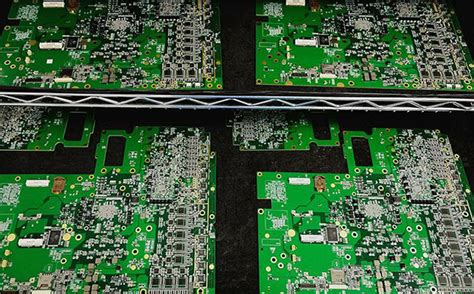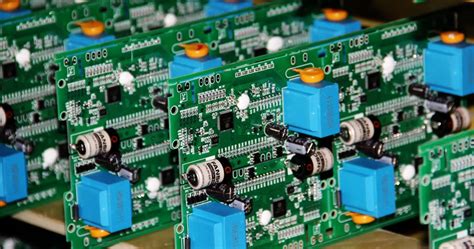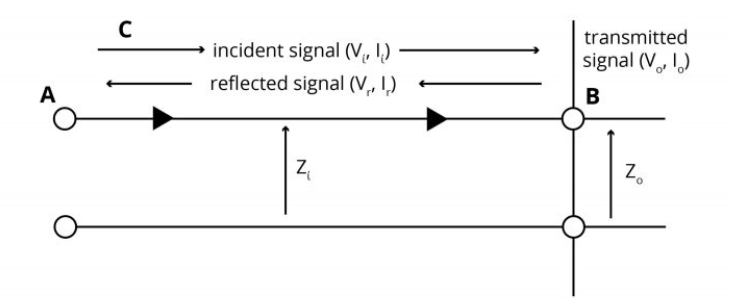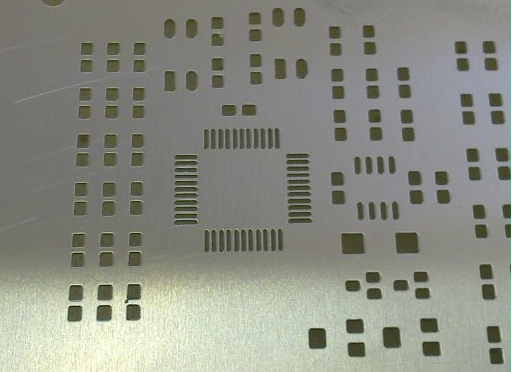PCBA Service Selection Strategies for Optimized Manufacturing Outputs

Key Takeaways
Selecting the right PCBA partner requires a systematic approach to align with manufacturing goals. Start by evaluating technical capabilities, such as surface-mount technology (SMT) proficiency and PCB assembly scalability. Prioritize vendors offering design for manufacturability (DFM) analysis, which reduces rework and accelerates time-to-market.
| Focus Area | Key Strategy | Impact |
|---|---|---|
| Quality Control | Implement automated optical inspection (AOI) | Minimizes defects |
| DFM Optimization | Early collaboration on component placement | Reduces assembly complexity |
| Supply Chain Resilience | Dual-sourcing critical components | Mitigates delays |
| Testing Protocols | In-circuit + functional testing | Ensures end-product reliability |
Tip: Always request a failure mode and effects analysis (FMEA) report from PCBA providers to assess their risk management protocols.
Cost-effectiveness shouldn’t compromise traceability; ensure suppliers adhere to ISO 9001 or IPC-A-610 standards. For scaling operations, verify their capacity for high-mix, low-volume (HMLV) or high-volume production. Finally, establish performance metrics—like first-pass yield (FPY) and mean time between failures (MTBF)—to quantify outcomes. A strategic partnership with a PCB assembly expert directly influences production uptime and long-term ROI.

Evaluating PCBA Manufacturers for Efficiency
Selecting the right PCBA partner requires a systematic approach to assess operational efficiency, which directly impacts production timelines and output consistency. First, analyze the manufacturer’s PCB assembly workflow—including automated processes like surface-mount technology (SMT) placement and automated optical inspection (AOI)—to gauge their capacity for high-volume output without compromising precision. Manufacturers leveraging advanced Industry 4.0 tools, such as real-time production monitoring and predictive maintenance systems, often demonstrate superior throughput optimization.
Additionally, evaluate their material procurement strategies. A streamlined supply chain for components like ICs, connectors, and substrates minimizes delays, ensuring uninterrupted PCBA production. Scrutinize lead times for prototype iterations and bulk orders, as these metrics reveal flexibility in scaling operations. Transparency in communication channels—such as shared dashboards for order tracking—further enhances collaborative efficiency.
Another critical aspect is energy consumption management. Facilities employing energy-efficient reflow ovens or waste-reduction practices in PCB assembly not only reduce operational costs but also align with sustainable manufacturing standards. Cross-reference these factors with client testimonials or case studies highlighting on-time delivery rates (ideally above 98%) to validate claimed efficiencies. By prioritizing these elements, businesses can identify PCBA providers capable of sustaining high-performance manufacturing ecosystems.

Balancing Cost-Quality in PCBA Services
Achieving equilibrium between cost efficiency and quality assurance in PCBA requires a strategic approach to supplier evaluation and process design. While budget constraints often drive decisions in PCB assembly, prioritizing the lowest upfront costs without considering long-term reliability risks can lead to rework, delays, or field failures. Key considerations include analyzing component sourcing strategies – opting for certified suppliers with traceable materials – and evaluating manufacturers’ capabilities in high-mix, low-volume versus mass production environments.
Advanced PCBA providers leverage design-for-manufacturability (DFM) insights to preemptively address potential defects, reducing scrap rates by 15–30% while maintaining competitive pricing. However, true cost optimization extends beyond unit prices: lifecycle analysis of solder alloys, conformal coating durability, and testing infrastructure (e.g., automated optical inspection systems) often reveals hidden value in mid-tier suppliers. A 2023 IPC benchmarking study showed that manufacturers combining ISO 9001-certified PCB assembly with lean inventory practices achieved 22% lower total ownership costs than budget-focused alternatives.
Transitioning to the next focus area, this cost-quality framework directly supports the implementation of robust quality control protocols – a critical bridge between financial efficiency and operational reliability in electronics manufacturing.
Robust Quality Control in PCBA Assembly
Implementing rigorous quality control measures is non-negotiable in modern PCB assembly workflows. Advanced inspection technologies, such as automated optical inspection (AOI) and X-ray imaging, enable manufacturers to detect micro-scale defects like solder bridging or component misalignment during PCBA processes. These systems complement traditional testing methods, ensuring zero-defect thresholds are met without compromising production speed.
A robust framework includes statistical process control (SPC) to monitor variability in real time, paired with in-circuit testing (ICT) to validate electrical performance. For high-reliability applications, environmental stress screening (ESS) simulates extreme operating conditions, identifying potential failures before products reach end-users. Equally critical is traceability: serialized tracking of materials and processes ensures accountability across the PCBA supply chain.
To maintain consistency, leading providers adhere to IPC-A-610 and IPC-J-STD-001 standards, which define acceptability criteria for solder joints and assembly integrity. Regular supplier audits and cross-functional quality reviews further mitigate risks, aligning with broader objectives like DFM optimization and cost-efficiency. By integrating these protocols, manufacturers reduce rework cycles while reinforcing trust in PCB assembly outcomes—a cornerstone for scaling production sustainably.

Streamlining Production via DFM Strategies
At the core of optimizing PCBA workflows lies Design for Manufacturability (DFM), a proactive approach that bridges the gap between design intent and production realities. By integrating PCB assembly considerations early in the design phase, engineers can preemptively address issues like component spacing, solderability, and thermal management. For instance, aligning pad geometries with automated pick-and-place machine capabilities reduces misalignment risks, while optimizing panelization layouts minimizes material waste. Statistical analysis of historical production data often reveals that 30-40% of yield losses stem from preventable design flaws, underscoring DFM’s role in cost containment.
Advanced PCBA providers leverage DFM analysis tools to simulate manufacturing scenarios, flagging potential bottlenecks such as inadequate clearances for reflow oven profiles or conflicting component heights. This collaborative process ensures designs adhere to IPC-7351 standards while balancing performance and manufacturability. A well-executed DFM strategy not only accelerates time-to-market by reducing post-design revisions but also strengthens quality consistency across high-volume runs. Transitioning to this methodology requires aligning cross-functional teams—from R&D to procurement—to prioritize standardization and process-aware design principles, ultimately creating a seamless bridge between innovation and scalable production.

PCBA Supply Chain Optimization Tips
Effective PCBA supply chain management requires a strategic balance between vendor responsiveness and inventory agility. Start by consolidating PCB assembly partners with proven track records in material traceability and logistics transparency—this reduces risks of component shortages or delays. Implementing real-time monitoring tools for raw material inventories and production milestones ensures alignment with demand forecasts, minimizing excess stock while avoiding bottlenecks.
Prioritize suppliers offering flexible MOQs (Minimum Order Quantities), which allow scaling PCBA orders up or down without compromising cost efficiency. For global operations, dual-sourcing critical components across geographic regions adds redundancy against geopolitical or logistical disruptions. Integrate DFM (Design for Manufacturing) feedback loops with suppliers to preemptively address design-related delays, creating a unified workflow from prototyping to mass production.
Leverage data analytics to optimize lead times, focusing on suppliers with certified quality management systems (e.g., ISO 9001) to maintain consistency across batches. Finally, establish vendor-managed inventory (VMI) agreements for high-volume components, shifting inventory ownership to suppliers while retaining visibility. This approach not only streamlines the PCB assembly pipeline but also strengthens partnerships, creating a resilient foundation for scaling production.
PCBA Testing Protocols for Reliability
Implementing rigorous PCBA testing protocols is essential for ensuring long-term reliability in electronic products. In-Circuit Test (ICT) remains a cornerstone for verifying component placement accuracy and electrical connectivity, detecting up to 98% of potential defects during PCB assembly. Advanced methods like Automated Optical Inspection (AOI) complement ICT by identifying solder joint anomalies or misalignments invisible to traditional testing. For mission-critical applications, functional testing simulates real-world operating conditions to validate board performance under stress, ensuring compliance with industry standards such as IPC-A-610.
To balance efficiency and thoroughness, manufacturers often adopt boundary-scan testing for complex boards with high-density components. This approach reduces test coverage gaps while minimizing downtime. Environmental stress screening (ESS), including thermal cycling and vibration tests, further exposes latent defects that could compromise PCBA reliability in harsh operating environments.
Integrating these protocols requires alignment with design-for-manufacturability (DFM) principles, as testing efficacy directly correlates with layout optimization. Partnering with PCBA providers that offer end-to-end traceability—from raw material inspection to final product validation—ensures consistency and reduces failure risks. By prioritizing multi-stage testing frameworks, businesses mitigate costly recalls while reinforcing quality assurance across the production lifecycle.

Strategic Vendor Partnerships in PCBA
Cultivating strategic vendor partnerships is a cornerstone of optimizing PCBA outcomes, particularly for enterprises prioritizing long-term manufacturing stability. Unlike transactional relationships, collaborative alliances with PCB assembly providers enable shared risk management, synchronized production planning, and joint investment in process innovations. Leading manufacturers prioritize vendors offering design-for-manufacturability (DFM) support, which bridges engineering intent with production realities to minimize prototyping iterations and accelerate time-to-market.
A robust partnership framework typically includes performance-based agreements that align quality benchmarks, such as first-pass yield rates, with financial incentives. This approach motivates suppliers to proactively address potential defects in PCBA workflows, from solder paste application to final inspection. Additionally, partners with vertically integrated capabilities—combining PCB fabrication, component sourcing, and assembly—can streamline material traceability while mitigating supply chain disruptions.
Forward-thinking organizations leverage vendor expertise to implement predictive maintenance models for assembly equipment, reducing unplanned downtime. Regular technology roadmap reviews with partners ensure compatibility with emerging standards like high-density interconnects or IoT-compatible assemblies. By treating PCB assembly providers as extensions of their R&D teams, manufacturers unlock opportunities for cost-optimized scaling and rapid adaptation to market-driven design changes.
Scaling PCBA Services for Growth
As demand fluctuates in electronics manufacturing, scaling PCBA services effectively requires a balance between flexibility and operational precision. Implementing modular manufacturing approaches allows manufacturers to adjust PCB assembly volumes without compromising turnaround times or quality standards. For instance, adopting automated pick-and-place systems and reflow soldering lines can accelerate PCBA throughput by up to 40%, while IoT-enabled monitoring tools ensure real-time process adjustments.
Strategic inventory management is equally critical: maintaining buffer stocks of high-demand components minimizes production delays during supply chain disruptions. Additionally, partnering with PCBA providers that offer multi-site production capabilities ensures geographic redundancy, reducing risks associated with localized logistics bottlenecks.
To sustain growth, integrate data-driven forecasting models that align PCB assembly schedules with market trends. This proactive approach not only optimizes resource allocation but also enables rapid scaling during peak demand cycles. Finally, prioritize vendors with certifications like ISO 9001 and IPC-A-610, as these benchmarks validate their ability to maintain consistency at scale. By embedding scalability into every phase of PCBA services, manufacturers can achieve agile, future-ready production ecosystems.
Conclusion
Selecting the right PCBA partner demands a holistic approach that aligns technical expertise with long-term business objectives. As manufacturers navigate the complexities of PCB assembly, prioritizing vendors with proven quality control frameworks and scalable production capabilities ensures consistent output across product lifecycles. A strategic emphasis on DFM-driven processes and adaptive supply chain management not only mitigates risks but also enhances cost-efficiency without compromising reliability.
When evaluating PCBA services, the integration of rigorous testing protocols and transparent communication channels remains critical for addressing evolving industry standards. By fostering collaborative partnerships with providers that invest in advanced technologies—such as automated optical inspection (AOI) or IoT-enabled traceability—businesses can future-proof their operations while maintaining competitive lead times. Ultimately, the convergence of technical precision, operational agility, and data-driven decision-making defines success in optimizing manufacturing outputs for both high-mix and high-volume electronics assembly environments.
FAQs
What criteria should prioritize when selecting a PCBA partner?
Focus on manufacturers with certified PCB assembly processes (e.g., ISO 9001, IPC-A-610), transparent quality control frameworks, and proven expertise in handling your product’s complexity. Scalability and supply chain transparency are equally critical for long-term reliability.
How do cost-effective solutions align with quality in PCBA services?
Optimizing costs requires balancing material sourcing, DFM strategies, and testing protocols. Reputable providers leverage economies of scale without compromising electrical testing or inspection rigor, ensuring defects are minimized early in production.
Why is design-for-manufacturability (DFM) essential in PCB assembly ?
DFM streamlines production by identifying potential bottlenecks, such as component placement conflicts or thermal management issues, during the design phase. This reduces rework, accelerates timelines, and enhances manufacturing efficiency by up to 30%.
What testing protocols ensure PCBA reliability?
Comprehensive testing combines automated optical inspection (AOI), in-circuit testing (ICT), and functional validation. Partner with vendors offering tailored testing workflows to match your product’s performance requirements and industry standards.
How can vendor partnerships support scaling PCBA operations?
Strategic collaborators provide flexible capacity planning, component sourcing networks, and real-time production analytics. This ensures seamless scalability during demand spikes while maintaining cost predictability and quality benchmarks.
Ready to Optimize Your PCBA Workflow?
For tailored PCB assembly solutions that align with your production goals, please click here to explore advanced PCBA services designed for precision and scalability.







